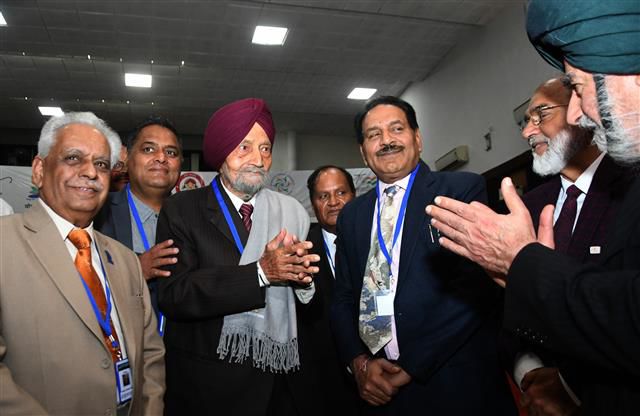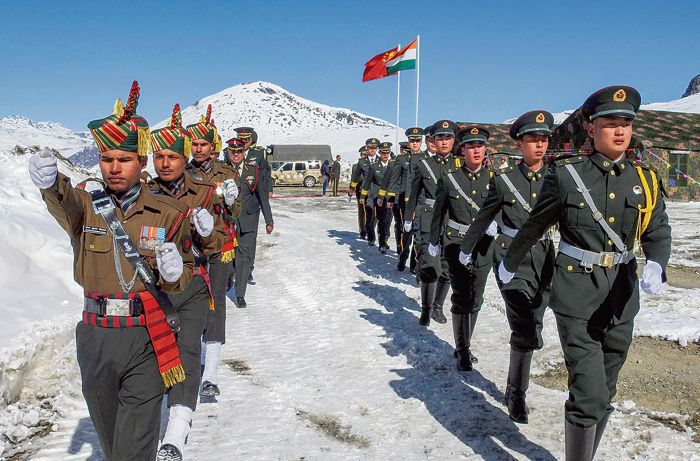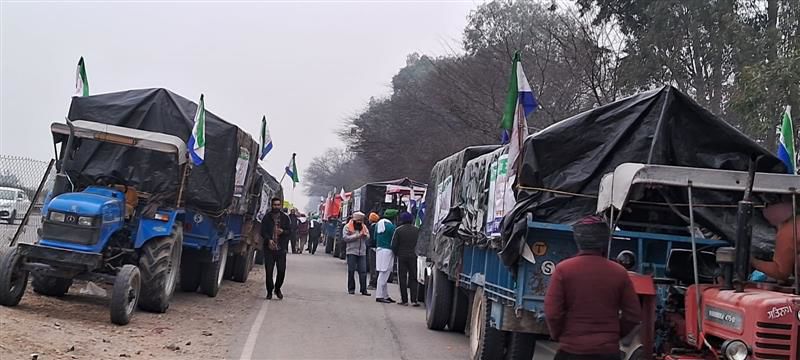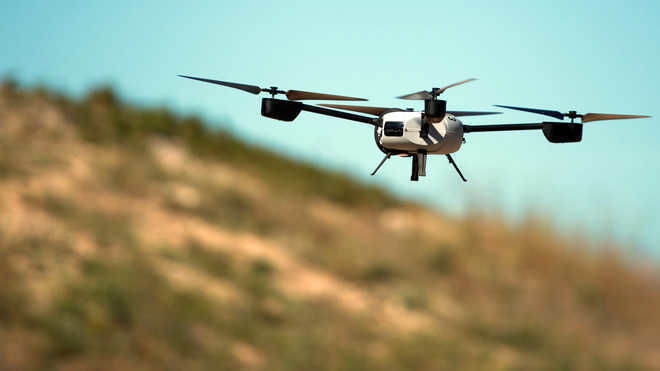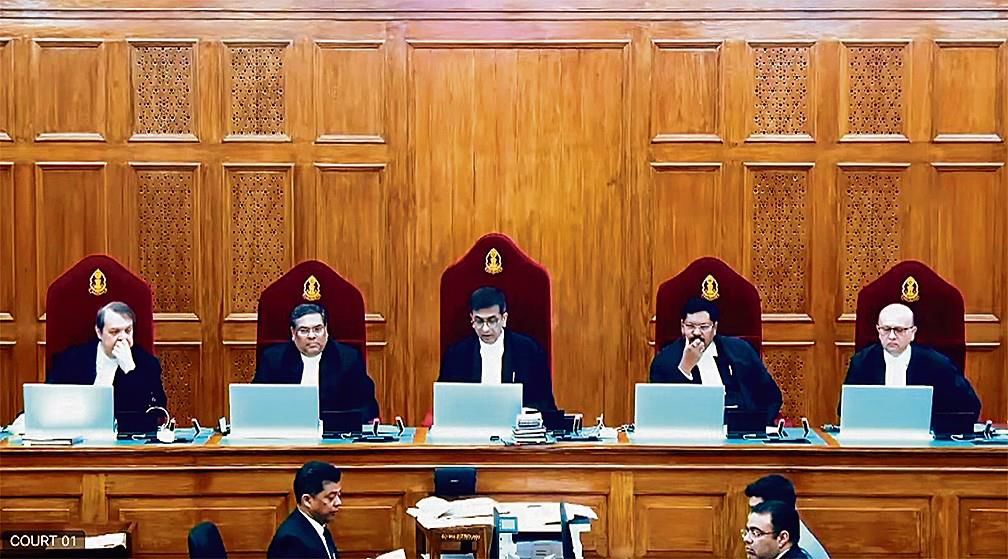Panel of 3 union ministers to hold talks with farmer leaders in Chandigarh this evening
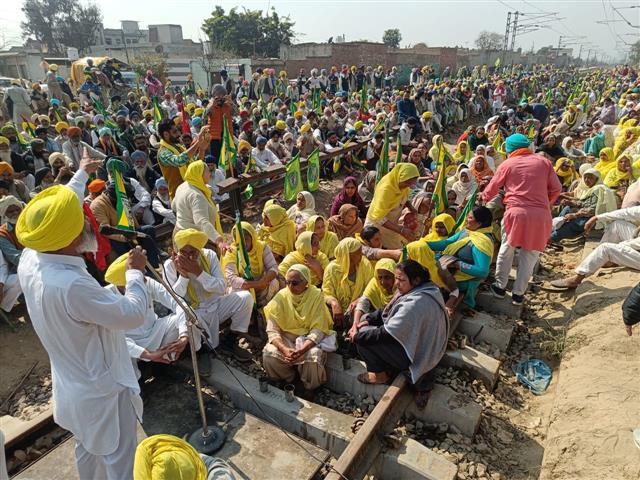
Chandigarh, February 15
A panel of three Union ministers will hold a meeting with protesting farmer leaders in Chandigarh on Thursday for another round of talks amid the ongoing standoff between the agitators and security personnel at the Punjab-Haryana border.
This will be the third round of talks between the two sides: the previous two rounds of dialogue on February 8 and 12 remained inconclusive.
Farmers from Punjab are camping at the Shambhu and Khanauri borders of Punjab and Haryana seeking to march towards Delhi to press the Centre to accept their demands.
The farmer leaders said they would not make any fresh attempt to move towards the national capital till the meeting is held.https://ee35a9ee977750e30d9d9929dd61fbcc.safeframe.googlesyndication.com/safeframe/1-0-40/html/container.html 16:30 15 FebFarmer leader Gurnam Singh Charuni announces new agitation plans in Haryana
16:30 15 FebFarmer leader Gurnam Singh Charuni announces new agitation plans in Haryana
Gurnam Singh Charuni said Haryana toll plazas will be made ‘free’ for 3 hours on February 16.
He also announced a tractor parade in every tehsil of the state on February 17, and a joint meeting of all farmers’ organisations on February 18. 16:20 15 FebFarm leaders arrive in Chandigarh for talks with Central team
16:20 15 FebFarm leaders arrive in Chandigarh for talks with Central team
Chandigarh: Farm leaders Jagjit Singh Dallewal, Sarwan Singh Pandher and Jarnail Singh arrive for talks with the Central team at Mahatma Gandhi State Institute of Public Administration in Sector 26.

The meeting with three-member team of Union ministers Arjun Munda, Piyush Goyal and Nityanand Rai is to begin at 5 pm. 15:49 15 FebSome trains diverted
15:49 15 FebSome trains diverted
Some trains on the Delhi-Amritsar route were diverted after farmers squatted on tracks at many places in Punjab over the Haryana Police’s action against protesters. 15:37 15 FebBKU (Charuni) extends support to the agitating farmers
15:37 15 FebBKU (Charuni) extends support to the agitating farmers
Gurnam Singh after holding a meeting of office-bearers of his union announced to extend support to the agitating farmers and hold peaceful protests in Haryana. Kurukshetra: Bhartiya Kisan Union (Charuni) Gurnam Singh after holding a meeting of office-bearers of his union announced to extend support to the agitating farmers and hold peaceful protests in Haryana. 13:38 15 FebFarmers allege use of artillery by Haryana police
13:38 15 FebFarmers allege use of artillery by Haryana police 12:50 15 FebShahkot toll plaza in Jalandhar
12:50 15 FebShahkot toll plaza in Jalandhar 12:41 15 FebLadhowal, Azizpur toll plazas
12:41 15 FebLadhowal, Azizpur toll plazas 12:33 15 FebToll plazas made free
12:33 15 FebToll plazas made free 12:23 15 FebBathinda-Amabala railway track blocked
12:23 15 FebBathinda-Amabala railway track blocked 10:56 15 Feb30,000 tear gas shells ordered
10:56 15 Feb30,000 tear gas shells ordered 10:31 15 FebCalm and peace on Day 3 of farm protest
10:31 15 FebCalm and peace on Day 3 of farm protest 09:29 15 Feb3rd round of talks
09:29 15 Feb3rd round of talks 09:26 15 Feb‘We should be allowed to protest peacefully’: Pandher
09:26 15 Feb‘We should be allowed to protest peacefully’: Pandher 08:57 15 FebBorder sealed with barricades
08:57 15 FebBorder sealed with barricades 08:54 15 FebProtests at toll plazas
08:54 15 FebProtests at toll plazas 08:51 15 Feb‘Rail roko’ in Punjab today
08:51 15 Feb‘Rail roko’ in Punjab today
About The Author Tribune Web Desk
Tribune Web Desk
The Tribune Web Desk brings you the latest news, analysis and insights from the region, India and around the world. Follow the Tribune Wed Desk for not just breaking news stories but wide-ranging coverage of events.






















































